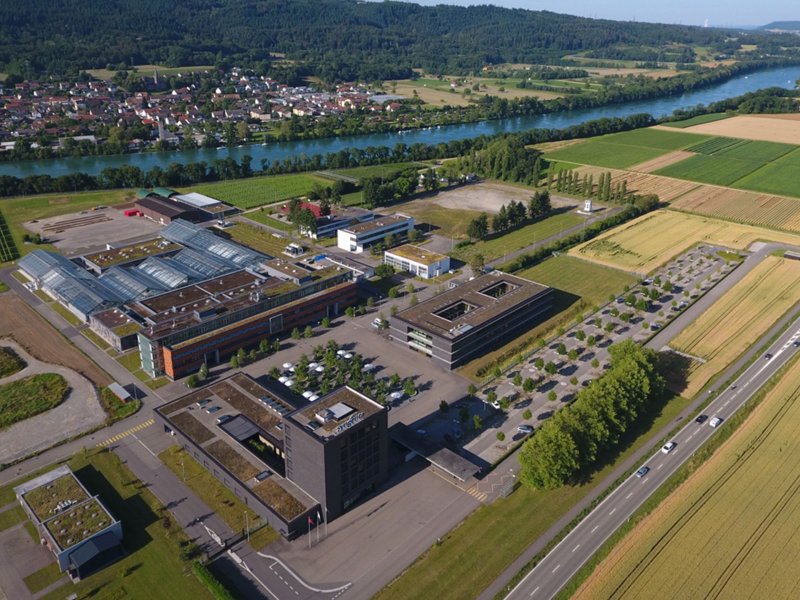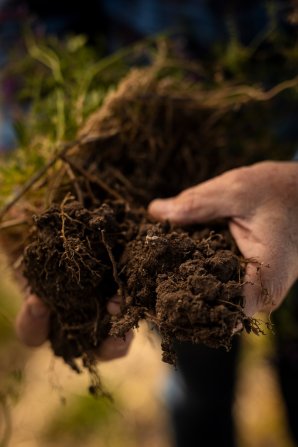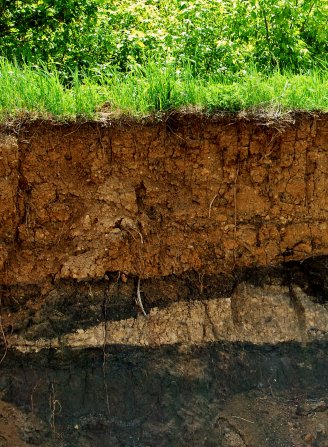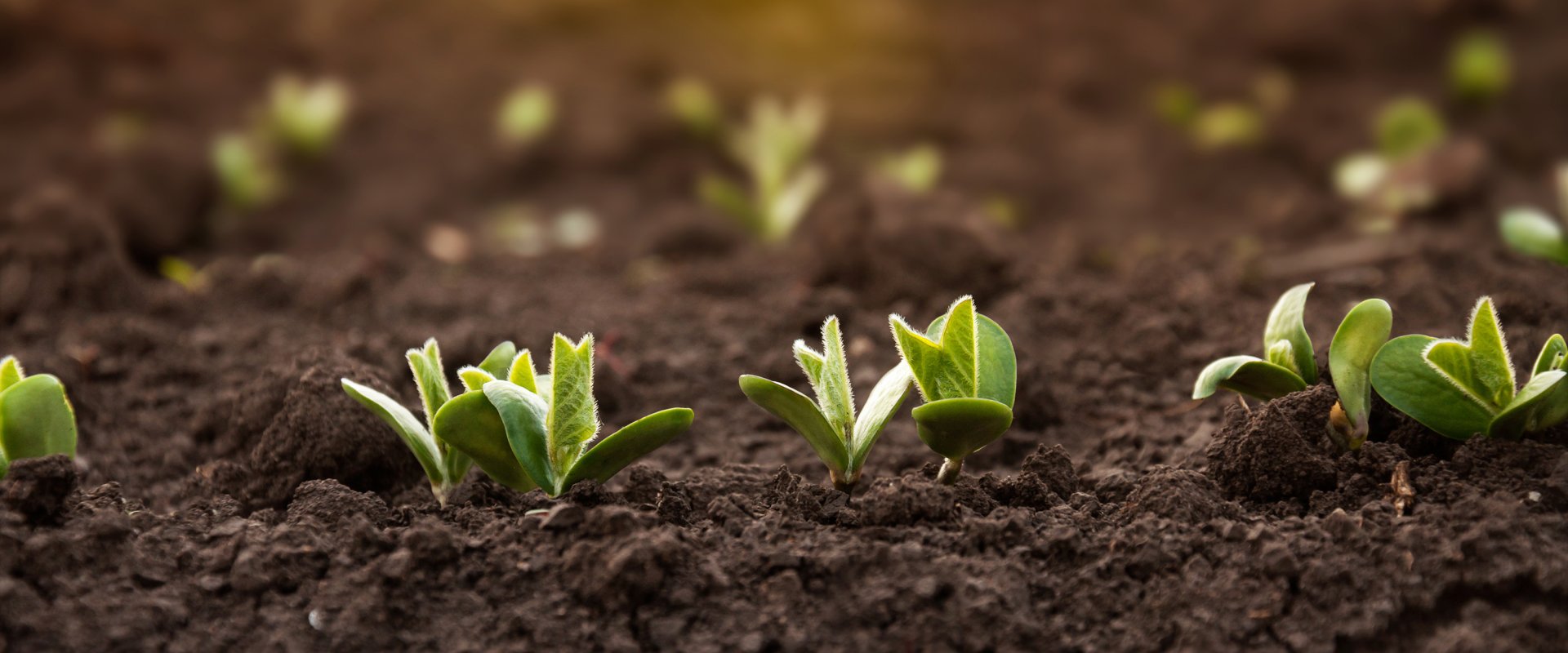What is soil health?
What soil health means depends on who you ask. For farmers, stewards of the land, soil can represent a key building block for their crops and their farm’s ability to mitigate the effects of climate change. It also lays the foundation to continue their legacy on the land.
For a scientist, soil health can represent their curiosity in understanding this complex ecosystem, which is rich with carbon, nitrogen and water.
And for agronomists, who serve as the interface between the two, soil health can be seen as a way to incorporate crop protection products, seed technology and sustainable practices that reduce the on-farm risks that a changing climate can produce.
For us, at Syngenta, where we engage with many groups across agriculture, we view soil health as an opportunity to translate science into solutions, empower farmers with new innovations, and to increase productivity and sustainability.
We have embarked on a continuous science-based pursuit of products and practices to harness the potential of soils to optimize grower outcomes and minimize environmental impacts. This is a world beneath our feet that we can explore together.
Unlocking the Secrets of Soil
Join us at Syngenta's LaSalle Soil Health Research Center, Colorado, US, where soil experts, including Chief Soil Scientist Matt Wallenstein and our CEO Jeff Rowe, reveal groundbreaking insights into soil health - the next frontier in agriculture.
What does soil do?
Soil is an ever-changing ecosystem where microbes, worms and other organisms thrive in a wonderfully complex microscopic landscape rich with carbon, nitrogen, and water. One teaspoon of soil can contain more living organisms than there are people on the planet. More than half of the world’s biodiversity is found in soil.
Soils vary widely in their inherent traits because they are formed from different types of rocks and organisms and have a unique history. Soil health focuses on optimizing the dynamic properties of soils to enhance productivity, nurture diversity, and enable ecosystem services through science-based management practices.
Essential to environmental sustainability, soils contribute to air and water quality, biodiversity and plant health. And it plays a vital role in agriculture’s response to climate change. Soils are integral to carbon sequestration. After plants remove carbon from the atmosphere through photosynthesis, it is transformed by the microbiome into carbon-rich soil organic matter.
At Syngenta, we work tirelessly to develop the innovations that enable farmers to adopt management practices that restore the soil that we depend on to grow enough food to feed the world.
Soil Sense
a soil health podcast
Discover Soil Sense, the podcast that explores how soil health practices are being implemented at scale worldwide. Join co-hosts Tim Hammerich and Abbey Wick as they debunk the myth that soil health can't be done on a large scale. Throughout this season, sponsored by Syngenta Group, we'll journey across continents to hear from farmers, agronomists, scientists, and experts who are making soil health a reality on farms of all sizes.
Understanding Earth’s
most valuable resource
“The most interesting way to think about our soil is not the parent material that makes it up, but soil as a living organism.”

How can we measure and improve soil health?
The health of soil has many vital signs we can measure. In laboratories, we can quantify soil’s nutrient content, texture, density, water-holding capacity, respiration, pH and even the presence of earthworms. DNA-based sequencing allows us to describe the vast microbiome inhabiting soil and decipher its functional capacity.
Some soil attributes, including its clay content, mineralogy and texture are inherent. But other attributes, such as its pH or fertility, can be improved with soil amendments: material added to the soil that improves its physical or chemical properties.
Likewise, management practices can also improve soil’s organic matter and biological functioning – therefore this is what soil health initiatives focus on.
As these soil attributes improve, they lead to better outcomes for growers, including higher yield and better yield stability, water management and nutrient use efficiency, disease suppression.
These are all scientifically known outcomes that we measure as part of our work to improve soil health.
But the ultimate measure of soil health, according to the U.S. Department of Agriculture (USDA), is its ability to support plant and animal life.
This is where regenerative agriculture practices can play a part. Practices such as crop rotation, cover crops, and smart nutrient management help to maintain soil health. They can also reduce the greenhouse gas emissions associated with farming, whether by cutting back on the need for chemical fertilizers that are energy intensive to produce; by reducing the use of heavy diesel-burning farm machinery; or by preserving soil’s ability to sequester the carbon dioxide that crop plants capture from the atmosphere and store in the ground.
The USDA advocates four principles of soil health:
- Keep soil covered as much as possible
- Minimize the degree to which soil is disturbed
- Grow plants year-round to nourish the soil
- Grow a variety of plants
How can technology help improve soil health?
As a digital innovator, Syngenta works at the intersection of agriculture and technology. That means we invest in reliable, data-driven tools to help farmers grow healthy, sustainable crops.
We are equipping farmers with cutting-edge technologies like soil sensors, drones and satellite imagery to gather much more data about their soil, which helps them to be more precise in their use of crop-enhancing or crop-protecting products that support biodiversity and maintain soil health.
Our INTERRA® Scan technology , which helps growers understand the texture, nutrient and carbon content of their soils to optimize nutrition and carbon capture, is an example of this approach.
A holistic approach to soil science
At Syngenta's research facility in Stein, Switzerland scientists focus on sustainable practices that enhance soil health, boost crop yields, and support global food security.

Why is soil health important?
We could not live without soil. It is the foundation for growing the food that we eat and for the planetary health that supports life on our planet.
Healthy soil is vital to maintaining food security and ensuring farmers can continue to feed an ever-growing population, which is on track to reach 9.7 billion by 2050.
Maintaining good soil health is fundamental to sustaining life on our planet. And not just for humans: a 2023 study estimated that more than half of all of Earth’s species live in soil, meaning soil health is integral to life as we know it.
However, this living ecosystem needs our help. The agricultural advancements that allowed farmers to feed billions of people over the past century have degraded our soil at an alarming rate.
The FAO estimates that more than a third of the Earth’s soil is already degraded, with a soccer-field equivalent of soil being eroded every five seconds.
Tilling and other agricultural management practices have led to widespread soil erosion, salinization, and compaction as the human population expanded over the last century.
For farmers, compromised soil quality results in lost productivity and hampered crop resilience against floods and drought.
We know that increasing yields through soil restoration is key to avoiding further land use conversion, a major driver of carbon emissions. But globally, just 13 percent of cropland currently incorporates soil conservation practices.
So, we’re stepping up to meet the challenge, providing farmers with cutting-edge, scientific tools to ensure agricultural systems flourish from the ground up, so they can keep feeding the world, sustainably.

How is Syngenta improving soil health?
We focus on improving attributes like organic matter, biodiversity, and nutrient balance that are responsive to management changes or can be enhanced through soil amendments.
We use sophisticated data-driven approaches to link these specific improvements in soil health to meaningful outcomes, including nutrient and water use efficiency, yield, and reduced environmental impacts.
Our Edapholog technology, for example, combines classic soil assessment techniques with cutting-edge computer vision and artificial intelligence to accurately monitor soil biodiversity. Giving farmers comprehensive soil health data means they can make more intelligent decisions about how they care for their crops.
Regenerative agricultural practices are at the heart of soil health and are at the foundation of Syngenta Group’s Sustainability Priorities.
That’s why we work with farmers to implement regenerative agriculture practices that nurture and restore soil health, protect the climate and water resources and enhance farm productivity.
However, practices such as no-till, cover cropping and precision agriculture require innovative technology. That’s where our powerhouse R&D engine comes into play.
Our market-leading solutions, such as TYMIRIUM® technology, protect plant roots from harmful nematodes and soil-borne diseases, while strengthening root systems, improving nutrient use efficiency, and enhancing crop resilience.
Alongside this, our biological seed treatment solutions act as a complement to these products, improving their efficiency in a sustainable way.
But we’re not stopping there. As an industry leader, we invest significant resources into breaking new ground in our understanding of soil and all its complexity.
Our Soil Health Center in Stein, Switzerland, is dedicated to uncovering the latest research and practical techniques to restore and nourish soil health.
We also partner with other scientific and agronomic experts to precisely assess the impact of biodiversity on soil health and other important agronomic indicators.
Beginning in 2020, multi-year pilot programs have been launched under our LivinGro® program in countries including Argentina, Chile, Germany, Mexico and Spain, that provide valuable insights into soil’s microbiota, its ability to sequester carbon, and its vulnerability to erosion and infiltration.
We will enable farmers to pass their land to the next generation in better condition than they found it, igniting a new epoch of regeneration and restoration.

How can we test soil health?
Understanding, improving and restoring soil health begins with first understanding it in greater detail. Soil testing is one of the most common ways to acquire information about soil. Soil testing can give many types of information, ranging from inherent characteristics like texture to highly dynamic and detailed information such as the genetic makeup of the soil microbiome.
Soil fertility testing
Many farmers will be familiar with routine soil testing which, as the name suggests, measures how effectively the soil can support crops with the nutrients they need to thrive.
There is no uniform method for this testing worldwide – in fact, there are more than a dozen different methods to measure soil fertility in Europe alone – and the tests are often tailored to each soil type and the growing conditions of each region.
However, all tests measure key components of the soil: its pH, the amount and level of nutrients it can provide crops and its organic matter content – the amount of decomposing plant or animal tissue in the soil.
Armed with this information, farmers can then adjust the specific nutrients they add to their soil, bringing balance to the environment that grows their crops.
Soil health testing
Measuring soil health is a relatively new practice that aims to assess the biological potential of soil, or its ability to support large and diverse microbial communities, suppress diseases and grow healthy crops.
Soil health is nuanced, influenced by changes in the physical and chemical properties of the environment itself. Therefore, a well-rounded approach that measures both is needed.
At Syngenta Group, we’re investing heavily in researching biological measurements, the newest frontier of soil health testing, and in the chemical changes that affect soil health to learn more about how we can measure and manage this vital resource.


